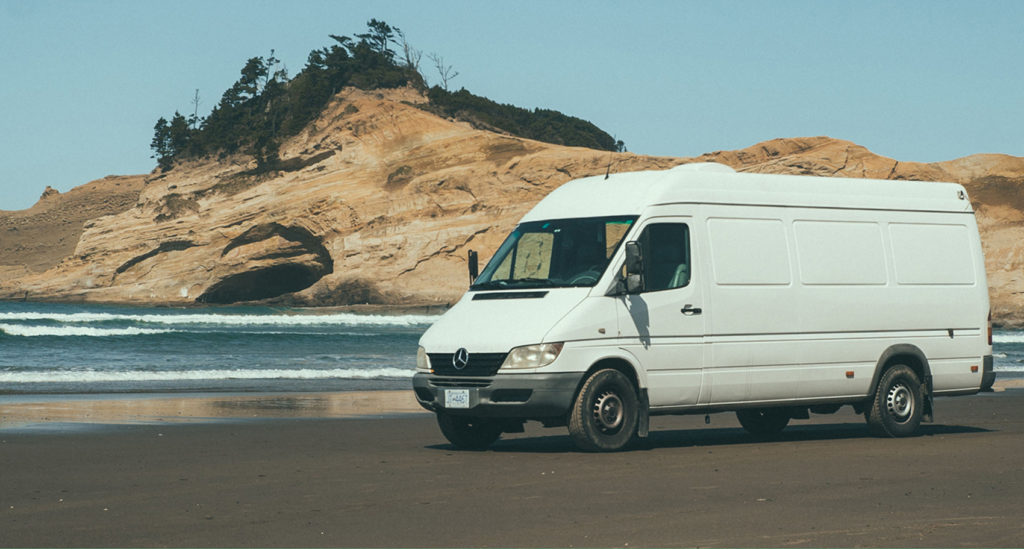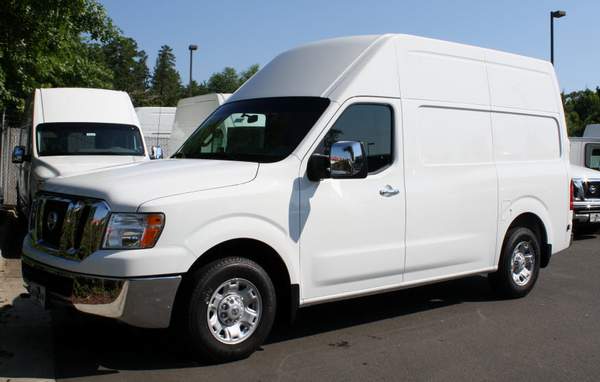I’ve never really been one to jump on the latest trend when it comes to normal societal things. I don’t like rap, pop, hip hop, or whatever kids listen to these days, I don’t wear skinny jeans (and wouldn’t even if it were physically possible), and I’m not a fan of IPA’s. However, there is one recent trend that I’ve been slightly looking into, but only partially…


Say hello to my new (to me) travel/race bus.
This story really begins way back in April/May, or even before that if you look at the big picture. I had built a custom “camper trailer” in 2018 which was just a makeshift cot in the back of a super redneck truck bed trailer. It was light, looked cool (depending on who you are) and did everything I needed it to do. It protected me from bears and the elements when camping out at the races. I could also lock a bike in there out of sight in case I was in town and didn’t feel comfortable locking it in the back of the truck in plain view.
This setup worked for me for a couple years, but was a bit cramped. I knew this going into the whole project, but it quickly got cluttered on longer trips and at Crankworx when I had a lot of gear. Everything slid around in the back under the bed, and nothing really had a place. I didn’t want to spend a lot of time or money improving those problems because I only spend around $500 on the whole project. Due to me not needing to own such an expensive truck, I ended up putting it up on craigslist and decided I wanted a van that I could sleep in to be more secure when sleeping in the city like I’ve needed to do a couple times, as well as I wanted to have the bike inside out of sight.
I looked at a couple E350 cargo vans in the fall of 2018, but knew that I wouldn’t be able to keep the bikes inside due to the low roofs. I had seen the high roofed Sprinter vans being used because they were tall enough to put the bikes underneath the bed with enough room to sleep on top. A quick google search of “are sprinter vans reliable” scared me. It turns out, the ones I was reading about had a ton of problems. In the spring, I did a lot of research on a lot of different types of vehicles ranging from sprinter vans, short busses, and cargo vans/trucks. I ended up going back to sprinter vans and upon further research, there were certain years that were actually quite reliable for a german vehicle, if taken care of. At first, I was set on a T1N Sprinter van. I could tell you the reasons why these are the best year of sprinter van to get, but that would take a whole other post. I think in the end I looked at over 15 of these vans, but they all had quite a bit of maintenance or repairs that needed to be done, most being ex Fedex vans, and most still cost between $12-15K. That was insane to me, for a 15 year old van which still needed $1000-$3000 worth of parts and maintenance items before they’d be road trip worthy to cost so much. I guess that’s just what the market dictated, and compared to Washington state, they were quite a bit cheaper up here in the Vancouver area. There was one van I almost bought, a 2005 which had 170K km with no rust and was actually not beat to crap on the inside like all the others. The lowest the fellow would go was $17.5K, which I almost went for, but realized after, I would be spending that much money on the base vehicle, without even building it, when a lot of the reason why I went this direction was to save some money by selling my truck. My truck was a lot nicer and worth more than what I needed in a vehicle.

T1N Sprinter
There was a period of time where I was looking at cargo vans with gas engines. I also almost pulled the trigger on a Nissan NV3500 SV. It was a 2012, and had average km for the year, but also needed some maintenance items and was a bit more beat up than I expected and the owner wasn’t willing to budge much on price. Call me picky, but I really didn’t want to mess up on this choice! It was becoming clearer that I wasn’t going to be able to find the ideal van within the price range that I felt was fair for what the vans were. This led me to searching for older short busses.

Nissan NV3500
There was a short bus with a diesel engine in Abbotsford with 355xxxkm, but a pdf document with all the recent maintenance done on it. It was only $5400, which is a really good deal for the year and build that it had. Unfortunately I wasn’t 100% sold on going with a bus, so I didn’t make a big effort to make it out there as soon as I saw the ad, so it ended up selling a couple days before It was convenient for me to make the hour long drive. Looking back, that was a pretty big opportunity missed, and I could have had that bus if I had acted sooner and with more priority. A couple other vans and busses ended up working out that way, with me not making up my mind and thinking that it wasn’t perfect, so the vehicle sold before I could go out there. One bus in particular I was super annoyed that I missed. It was a 2002 ex handydart like mine, but with lower km and at a pretty good price. So let that be a lesson! You gotta act fast on craigslist to get the good deals. Fortunetly, when I was really loosing hope after checking for new ads multiple times a day on facebook, craigslist, kajiji, and anywhere else I could think of, I got a reply to one of the wanted ads I posted…
I ended up purchasing a 2001 Ford E350 cutaway chassis. It used to be a Handydart bus, a bus that was used to transport people in wheelchairs. It had the lift still in it when I bought it because the guy who had bought it from Handydart when it was decommissioned used it to transport coffee machines to and from the Starbucks locations and his shop for repairs. I chose this chassis because, as you can see in the photos, the rear compartment of the bus behind the front door, is only an inch or two wider than the front part of the bus, compared to 8-12 inches on something like a short school bus. This means it will be easier to park and manoeuvre in tighter areas (like everywhere in metro Vancouver). It has about 90 square feet of usable space in the back, more than enough for a bed, storage for the bikes, and some other creature comforts that I’m still debating.
I chose the 7.3 over the 6.0 or other chevy engines in this type of bus because it is the most reliable and requires the least maintenance if taken care of properly. I had a truck with a 6.0 Powerstoke, and while it was powerful, loud (in all the right ways), and never left me stranded, it did require a couple repairs over the years I had it, which would have been terribly difficult to do in the van chassis that this bus has because of the limited under the hood space. The 6.0 is a great engine if a few repairs and modifications have been done early on in the life of the vehicle. To do the modifications later on is possible and worthwhile in the trucks, but it is much harder to do on the vans because of the limited space. The only bus I looked at with the 6.0 was poorly taken care of, and not even worth a 1/4 of the $5000 they were asking. The later model Chevy engines that came in this type of bus also were notorious for expensive repairs that would be made even harder and more pricy due to the van chassis. The 7.3 Powerstroke is known for its reliability, and while not perfect (like any engine), it can be a million+ mile engine if taken care of properly. This one has 416000KM, by far the highest km vehicle I’ve ever owned, but runs better than a lot of others that I looked at that have half the milage. It was also registered as a commercial vehicle, meaning it had to have yearly inspections and if ANYTHING was wrong, it had to be fixed otherwise it wouldn’t pass inspection. The previous owner sent me all the service records for the past 5 years (he only had digital records that went back that far), so I could see that it was maintained properly when he owned it. That combined with myself going over the bus pretty closely made me pretty confident that there were no major issues with the engine. Due to all my research and owning a 6.0 Powerstroke, I was able to carry over some of that knowledge to know what to look for in the 7.3, in an addition to some more specific research into the specific issues they commonly have. Due to the high milage and the fact that it did need some maintenance items meant I got it for about $2500-$3000 cheaper than the other busses with the same chassis and same engine that I had looked at. It only has single rear wheels, instead of a dually like most short school busses. While it won’t be able to handle as much weight, I’ll be saving money when I need to change tires, and save a bit on the better fuel milage from less drag.
Stay tuned as I begin to build out the van for the 2020 season!

